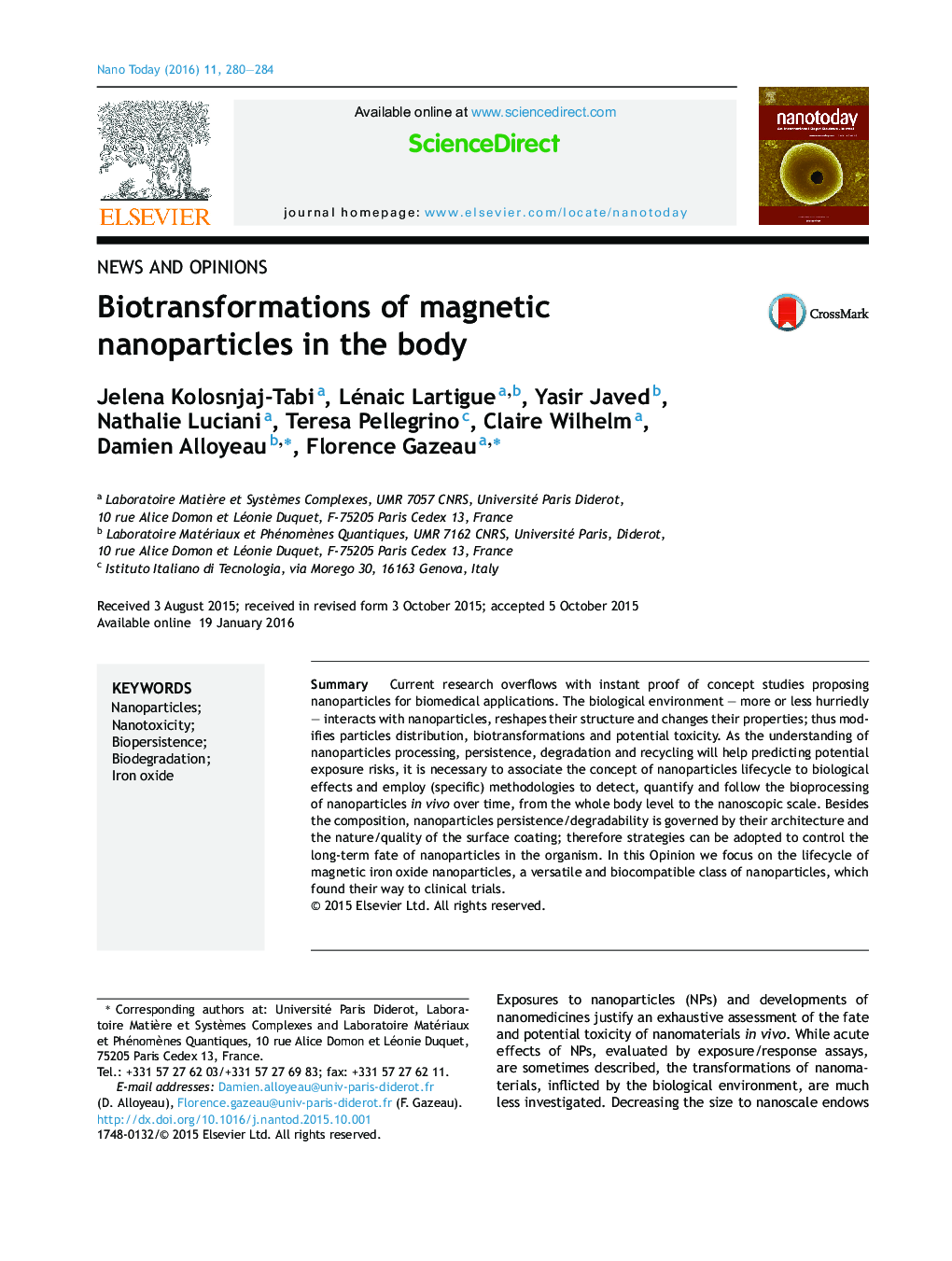| Article ID | Journal | Published Year | Pages | File Type |
|---|---|---|---|---|
| 32018 | Nano Today | 2016 | 5 Pages |
•The transformation (lifecycle) of nanoparticles must be considered over time in the organism.•The lifecycle of nanoparticles should be monitored in situ at the nanoscale and through the evolution of their physical properties.•After splenic and hepatic capture, iron oxide nanoparticles locally degrade in the lysosomes of macrophages over months and lose their magnetic properties.•Degradability of IONPs is governed by particles architecture and the nature and quality of the surface coating, therefore strategies can be set on to control the long term fate of nanoparticles in the organism.
SummaryCurrent research overflows with instant proof of concept studies proposing nanoparticles for biomedical applications. The biological environment – more or less hurriedly – interacts with nanoparticles, reshapes their structure and changes their properties; thus modifies particles distribution, biotransformations and potential toxicity. As the understanding of nanoparticles processing, persistence, degradation and recycling will help predicting potential exposure risks, it is necessary to associate the concept of nanoparticles lifecycle to biological effects and employ (specific) methodologies to detect, quantify and follow the bioprocessing of nanoparticles in vivo over time, from the whole body level to the nanoscopic scale. Besides the composition, nanoparticles persistence/degradability is governed by their architecture and the nature/quality of the surface coating; therefore strategies can be adopted to control the long-term fate of nanoparticles in the organism. In this Opinion we focus on the lifecycle of magnetic iron oxide nanoparticles, a versatile and biocompatible class of nanoparticles, which found their way to clinical trials.
Graphical abstractFigure optionsDownload full-size imageDownload high-quality image (143 K)Download as PowerPoint slide
